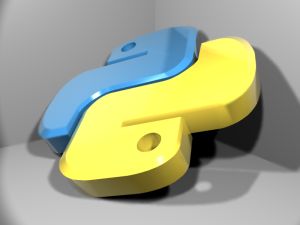 In the previous article, we introduced Python classes, discussed some of their features, and some of the similarities and differences from C++ classes. In this article, we will use our knowledge of C++ classes to rewrite our hash functions as a Python class.
In the previous article, we introduced Python classes, discussed some of their features, and some of the similarities and differences from C++ classes. In this article, we will use our knowledge of C++ classes to rewrite our hash functions as a Python class.
Writing the HashObject Class
Our first job is to write the class constructor. Since it makes sense to initialize our list when the class is first instantiated, I decided to incorporate the createBuckets() function as part of the constructor:
class HashObject(object):
def __init__(self, num):
self.numBuckets = num
self.hashSet = []
for i in range(num):
self.hashSet.append([])
This constructor takes one parameter (num), and assigns it to numBuckets, and then initializes our list.
Next, we want to define hashElement, which takes a number and hashes it to an index in hashSet. This function is the same as before, except that we do not have to pass the number of buckets to it:
def hashElement(self, elem):
if type(elem) == int:
return elem%self.numBuckets
The new insert function requires only one parameter: the list item to be inserted into one of the buckets:
def insert(self, i):
self.hashSet[self.hashElement(i[0])].append(i)
Note that it is assumed that the first element of the list to be stored is assumed to be the key. Next, we need a remove function. We will take one parameter: the key value of the item to be deleted:
def remove(self, key):
newElement = []
for j in self.hashSet[self.hashElement(key)]:
if j[0] != key:
newElement.append(j)
self.hashSet[self.hashElement(key)] = newElement
Finally, we need to write the function to check to see if an item with a certain key exists:
def member(self, key):
return i in self.hashSet[hashElement(key)]
One additional member function we may want to define is an accessor function for hashSet so we do not have to directly access the list, a good practice, since data hiding is one of the objectives of object-oriented programming:
def getElement(self, key):
for j in self.hashSet[self.hashElement(key)]:
if j[0] == key:
return j
As you can see, we iterate through each list item in the bucket the key value hashes to (multiple items may be stored in a single bucket). When we find an item whose first value equals the key, we return that item.
With variables and member functions for HashObject defined, we can rewrite hashTest to test our class:
def hashTest():
h = HashObject(51)
h.insert([2175,'Homer Simpson','Technician',20])
print(h.getElement(2175))
h.insert([4158,'Elmer Higgins','Engineer',17])
print(h.getElement(4158))
h.insert([2583,'Waylon Smithers','Assistant',25])
print(h.getElement(2583))
h.remove(2175)
print(h.getElement(2175))
print(h.getElement(2583))
Running this function results in the following output:
[2175, ‘Homer Simpson’, ‘Technician’, 20]
[4158, ‘Elmer Higgins’, ‘Engineer’, 17]
[2583, ‘Waylon Smithers’, ‘Assistant’, 25]
None
[2583, ‘Waylon Smithers’, ‘Assistant’, 25]
In this function, we first create a hash set with 51 buckets. We insert the first record (Homer Simpson’s), and print it out, confirming its successful insertion. We insert a second record, also printing it out to confirm its insertion. Then we enter a third item (which, incidentally, hashes to the same location as the first item), and print it out, confirming its insertion and also confirming that we can successfully iterate through a bucket. Finally, we remove the first record and try to print it out. Since the getElement function will not return a value for a nonexistent record, the print call prints out “None”, for no value. Finally, we successfully print out the third record.
I have made HashObject and HashTest available for download here, so you can download it, run it and modify it to your heart’s content.

Recent Comments